Robot uses stacked spiky particles to build groundbreaking ICD Aggregate Pavilion 2015
Researchers and students from the University of Stuttgart used 30,000 spiky components and a robot to create a pavilion described as the "first architectural structure realised with a designed granular system" (+ movie).
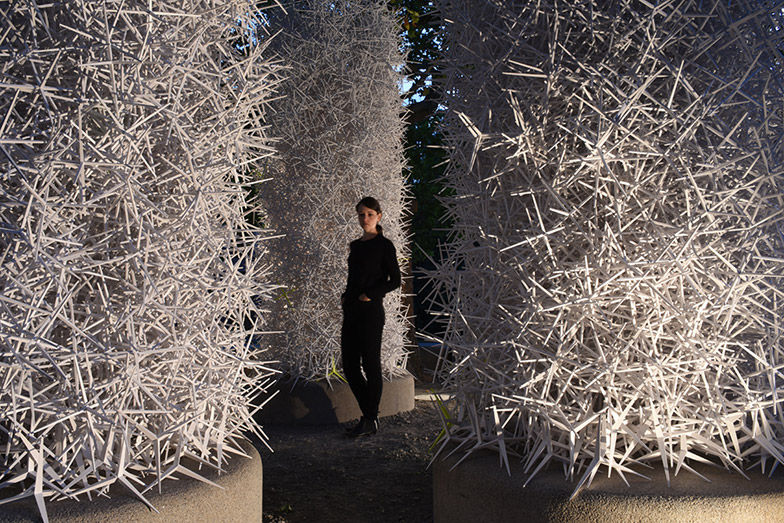
The ICD Aggregate Pavilion 2015 was designed by researcher Karola Dierichs and professor Achim Menges from the university's Institute for Computational Design.
It forms part of a research project exploring the potential of designed granular matter – synthetic particles that can be used to build freestanding structures based on their programmable properties.
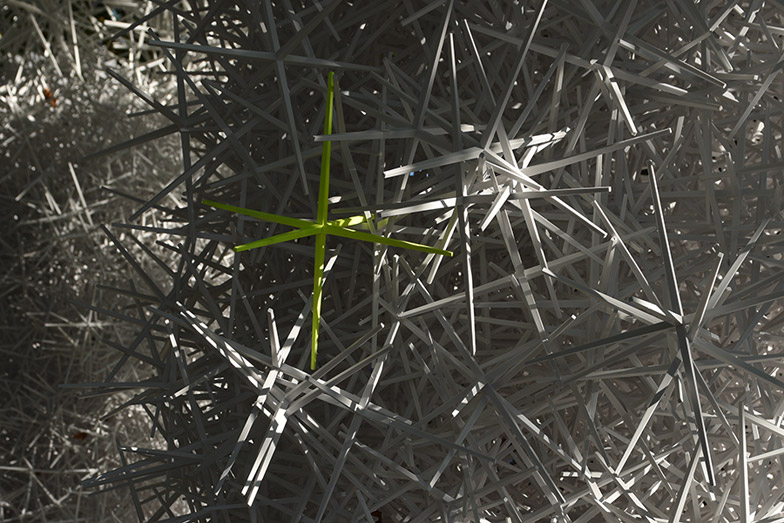
"In a designed granular system the individual particle is custom designed to exhibit a specific behaviour," Karola Dierichs told Dezeen.
"In this case we were aiming to develop designed granules which allow for building vertical structures that do not need additional formwork."
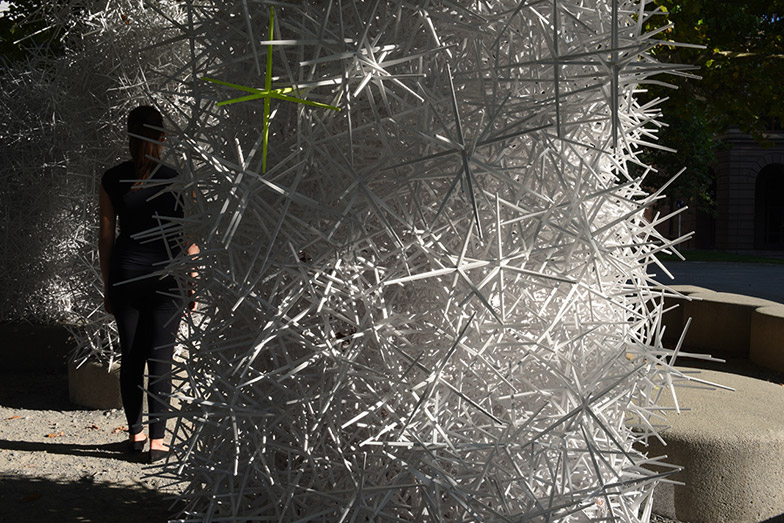
The granules are made from recycled plastic that is injection moulded to form particles with either four or six slender arms. The six-armed versions can be enlarged to create a third subgroup of particles, each with slightly different functional characteristics.
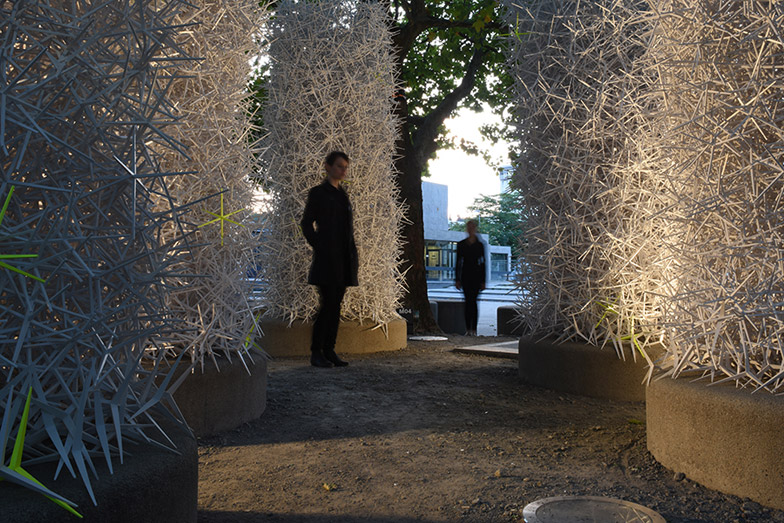
These modular components are suited to creating vertical structures as they grip and bind to one another when stacked. The three types of particle are arranged roughly in layers, with the more robust components situated at the base where they are required to support greater loads.
Over the course of a year, the project team trialled various forms and ways of distributing the particles, using scale models and full-sized prototypes to identify a suitable format.
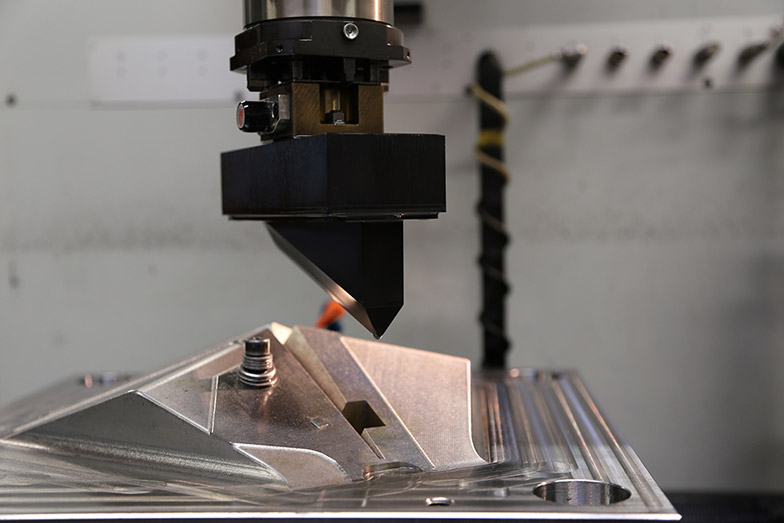
Distinct-Element Modelling (DEM) simulations were also employed to help analyse the overall structural performance of systems comprising large numbers of individual elements.
To build the towers that form the pavilion, the team programmed a cable robot to drop small clusters of the granules in specific areas based on their research into possible construction and grading techniques.
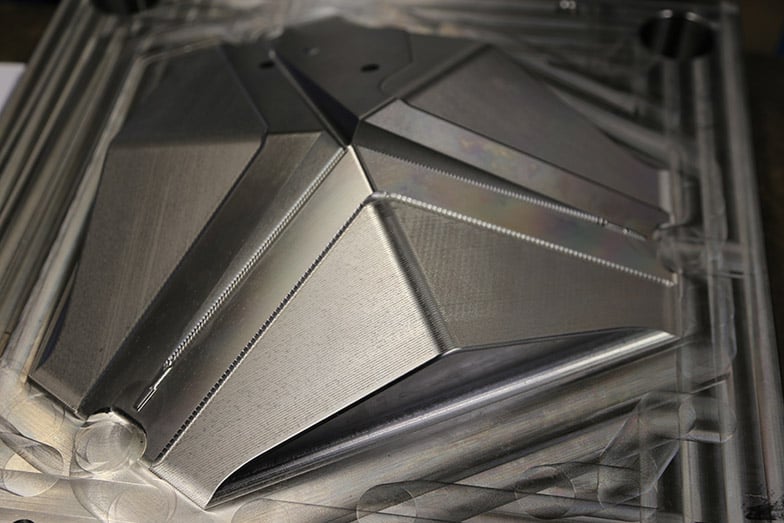
The robot was suspended from a series of cables fixed to four trees around the edges of the seven-square-metre site. It was calibrated to ensure precise deposition of the modules, achieving accuracies of just a few centimetres and with a payload of 10 kilograms.
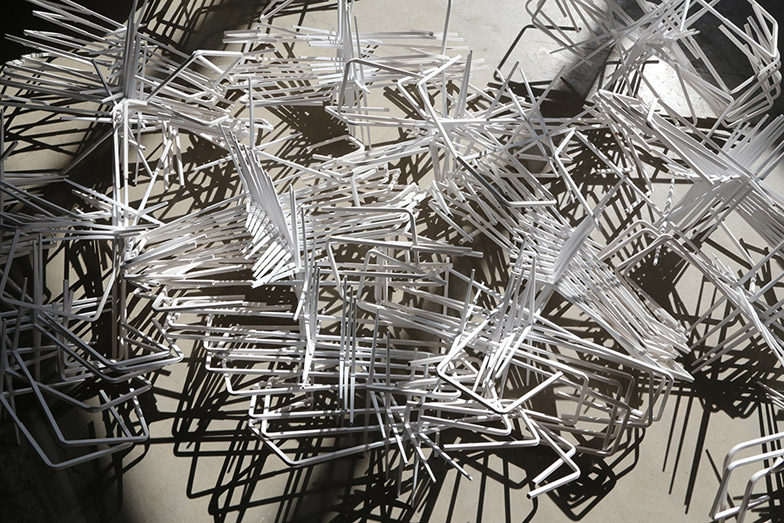
A total of 30,000 particles were stacked to form a series of towers positioned on concrete plinths. The pavilion took just a few hours to construct and no additional formwork was required.
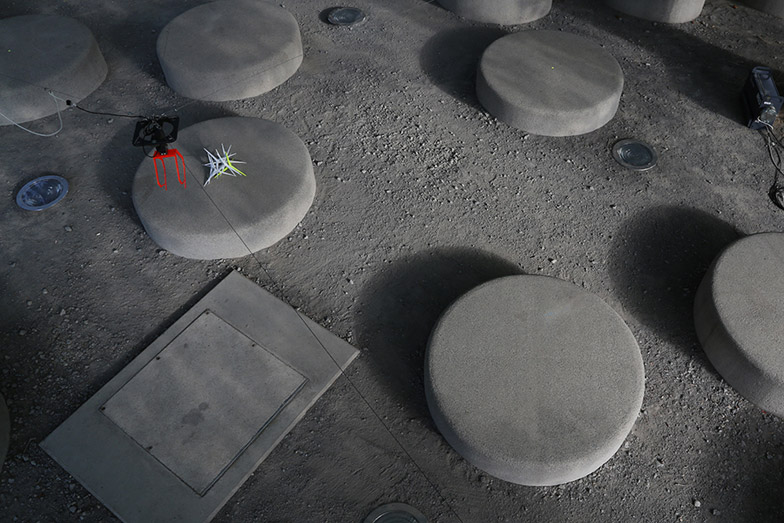
The lack of a binding material means the system is easy to dismantle and reconfigure – a process that was enacted several times during the exhibition period.
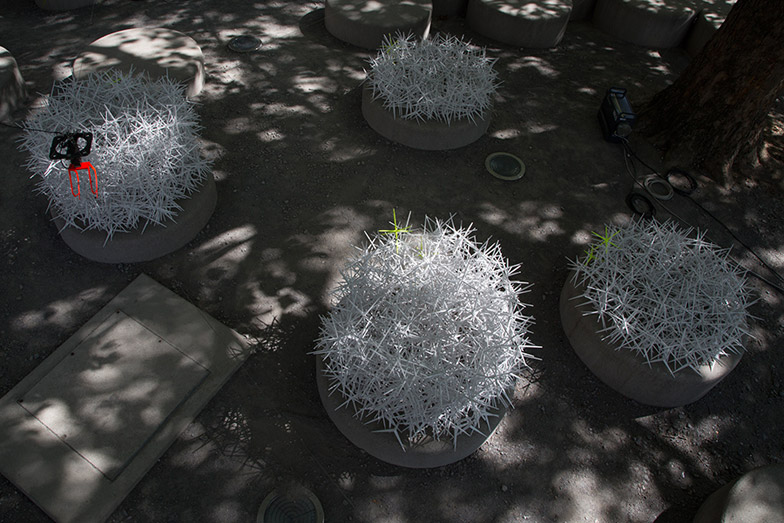
According to Dierichs, the project demonstrates that this type of aggregate construction has practical applications in scenarios requiring swift and easily adaptable building systems.
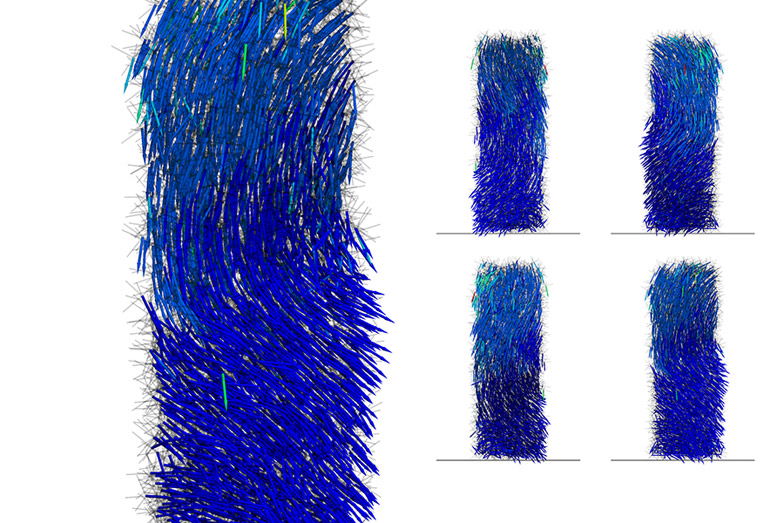
"We are mainly looking towards rapidly deployable structures as well as any type of temporary applications," said Dierichs. "You can think of it as a type of concrete without a binder that allows for rapid pouring and solidification but also for fast reconfiguration."
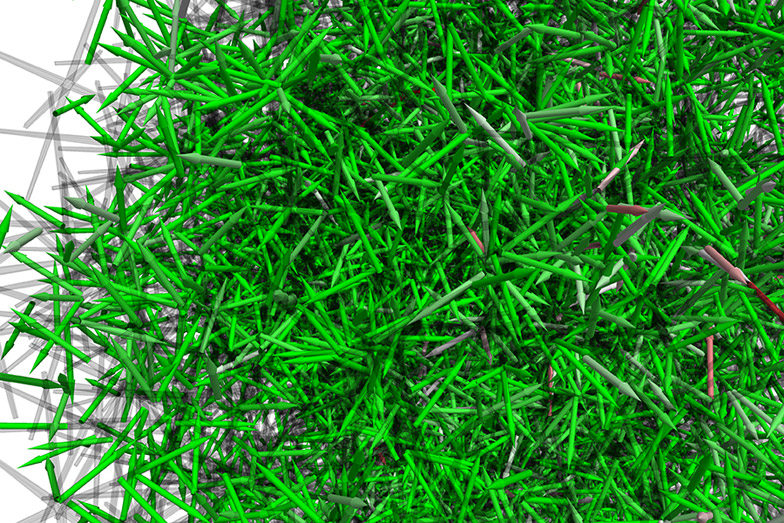
The structures were erected over the summer on the campus of the Institute for Computational Design, which has previously presented a woven carbon-fibre pavilion based on the lightweight shell of beetles, a double-domed structure built from plywood panels prefabricated by robots and a curving pavilion made from spiky bioplastic modules.
Photography is courtesy of ICD, University of Stuttgart.
Project credits:
ICD – Institute for Computational Design: Karola Dierichs and Achim Menges
Design team: Giulio Brugnaro, Matthias Helmreich, Ondrej Kyjanek, Gergana Rusenova, Emily Scoones and Leyla Yunis
Cable robotics: Martin Loucka, Ondrej Kyjanek
Manufacturing: Wilhelm Weber GmbH & Co. KG
Funding: Holcim Awards for Sustainable Construction, ITASCA Consulting